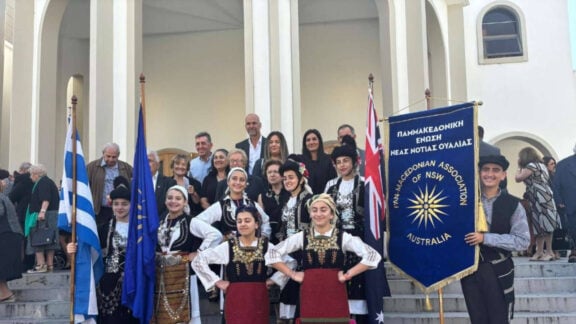The traditions of the tsipouradika have a history beginning in the early part of the 20th century in the city of Volos. In later years this gave rise to the ouzeri and the mezedopolio in wider Greece. Although I have to say that in Thessaloniki today there are many tsipouradika, ouzeri, mezedopolia and any kind of Greek eating that one can ask for, it is no accident that the northern capital is considered today to be the food centre of Greece.
The Greek refugees from Asia Minor settled in many places in Greece and took the frugal mainland eating habits of the locals to new heights – one of these places was Volos, where the famous Tsipouradika had their beginning. They flourished at the port of Volos and in Nea Ionia (Volos), where there was a huge influx of Greeks from across the sea, and as the name Nea Ionia reveals (The New Ionia), Greeks from the east were Ionian Greeks all the way back from antiquity and are known by that name to this day in the Middle East and referred to as Unun’, Ionian.
I watched Ilia Mamalaki’s wonderful series on Greek food when I was in Greece and even though he does not have the heritage of the Greek from Asia Minor, in one episode when he was talking about a particular dish he said, “we owe a lot to the Greeks who came from Asia Minor and we will never be able to repay them”.
The evolution of the tsipouradika came about via the working class people of the ports in Volos. At the end of the working day – keeping in mind that early afternoon was the time of the day that in Greece, to this day, is considered ‘mesimeri’ (the middle of the day) – when the men finished at the port they would gather at the small kafenia (cafés) at the port to drink a tsipouro. Given that Greeks don’t drink without food, the tsipouro would be accompanied with small plates of mezze (mezzedaki), something that is still done to this day. This became a way of life in Volos, and over the years the ‘parees’ (the company) became more extended and larger, the mezze became more diverse and richer, but the ritual was the same and always kept its authenticity.
Eventually the tsipouradika of the area became an institution and became a meeting place for all the Voliotes and not only during the day.
Eventually the fame of the tsipouradika spread all over Greece and became known outside Greece as well. Today the tourists, Greeks and non-Greeks, will go to visit the tsipouradika and some will become fanatical patrons.
There is no secret to the endurance of these unique eating places, it is the fact that they have kept their authenticity over the years and the food is always fresh and wholesome with ‘modernity’ interfering only in the availability of a greater variety in the mezze and not in its quality or in the way it is presented. The mezze is served in stages and every time a new batch comes out it is different, the patrons do not order a particular dish, the small portions of mezze come out as each new bottle of tsipouro is ordered in its authentic small bottle that barely takes 2 shots – this is called the 25 raki (kosipendaraki). The variety of the mezze is so great that one can not possibly taste them all in one sitting, and that in itself is incentive enough to come back, and not only for the food, as the atmosphere in these eating places is unique to Greece.
It is said that recipes are never given away as they are passed down to the following generations of the owners of the tsipouradika.
If you find yourself at a tsipouradiko, know the ritual. You hold your fingers up and order how many and that is to do with as many as there are sitting on the table. The mezze is the job of the waiter and you never interfere. Each time you order another 25 raki you get a new batch of mezze, which is different to the previous batch. The little bottles stay at the table till you leave or till you ask the waiter to take them.
The word mezze has its roots in Persian meaning ‘to savour’, and the word is used in Greece and all over the Middle East and in Turkey.
Advertisement
Ta tsipouradika
From the history of the tsipouradika, the food eaten, to the ritual of the event, know your way around this very Greek eatery







